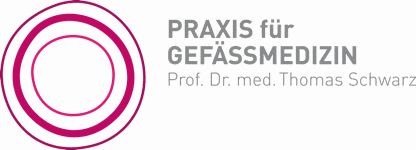Testing the veins for venous insufficiency and varicose veins
Venous ultrasound testing for suspected venous insufficiency or varicose veins is quick, easy and painless and it does not involve radiation. It is also very reliable.
What does the testing involve?
The vein system consists of interconnected superficial and deep veins.
Ultrasound visualizes the vein pathways very accurately, from the large veins to the tiny side-branch vessels. Color Doppler testing can be used to measure venous reflux. Reflux usually occurs when veins are dilated and the vessel valves no longer close properly. The diseased veins often have a twisted and tortuous pathway. These veins are referred to as “varicose veins.”
What does the procedure involve?
The patient lies on a tilt table and is examined in both the seated and standing positions. This allows the veins to fill well and provides for ideal testing conditions.
The test identifies “reflux” or pathological return of the blood to the extremity. This is a sign of “leaky” venous valves.
The procedure lasts about 10 minutes.
Who should be tested?
Primarily patients with suspected venous congestion. Typical symptoms include swelling of the legs, a feeling of heaviness, calf cramps, leg pain and skin lesions such as brown discolorations or skin ulcers. All patients with ulcers should have their arteries and veins tested.
However, in patients with vein disorders that are visible superficially it is also important to rule out a deeper varicose vein disorder, such as spider veins. In other words, venous ultrasound testing is also well-suited for preventive care.
For patients with a family predisposition to venous insufficiency, it is a good idea to undergo ultrasound testing at regular intervals.
How do I prepare for testing?
You do not need to fast before the testing. The test is quick and does not pose any risk to the patient. No additional or invasive tests are necessary, which means that any treatment can be planned for immediately after the ultrasound testing.
Treating venous insufficiency/varicose veins
In the past, treatment options for venous reflux disorders used to be limited to a few methods including compression stockings and liquid sclerotherapy or surgical procedures, such as varicose vein stripping.
For several years, however, catheterization procedures have been approved to treat varicose veins and in many countries, have practically replaced surgical treatment. The most widely used procedure is known as endovenous thermal ablation, in which a catheter is used to “burn” the diseased vein with heat. Two methods – laser therapy and radiofrequency ablation – have been thoroughly tested in clinical trials and have been shown to be highly effective and safe, especially when compared to surgery. For this reason, in the United States, professional medical associations now recommend laser therapy as the treatment of choice for varicose veins rather than surgery. The new methods also allow procedures to be performed on an outpatient basis, for instance in a vein care practice. This offers working patients an advantage over surgery because they do not have to miss work. The cosmetic results of laser therapy are also ideal since it leaves no visible scarring.
Who needs treatment?
Studies have shown that nearly half of all women and one-third of all men have varicose veins. Many varicose veins do not cause symptoms and do not have to be treated for medical reasons. In many cases, consistent conservative treatment with physical therapy and compression with appropriate garments and/or stockings are enough to alleviate symptoms.

